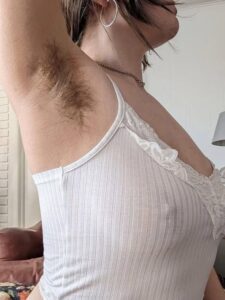Across the globe, the conversation about beauty is undergoing a profound shift.
For decades, media, advertising, and societal expectations set rigid standards—smooth skin, flawless makeup, and narrowly defined facial features were promoted as the ultimate markers of attractiveness.
These ideals often influenced how women and men perceived themselves, creating pressure to conform to a single vision of beauty.

Today, however, a growing movement is challenging these norms. Individuals, artists, and cultural influencers are asking critical questions: What is beauty? Who defines it? And why should a single standard apply to everyone?
One powerful example comes from London, where a photographer launched the Natural Beauty Project. This series gained attention not just for its artistry but for its social message: by photographing women who embrace natural body hair—particularly underarm hair—it confronts long-standing taboos while sparking conversations about self-expression, autonomy, and authenticity.
Historical Roots of Beauty Standards
Understanding projects like Natural Beauty requires examining the origins of beauty ideals. Throughout the twentieth century, advertising and media heavily shaped grooming habits. In the early 1900s, razor companies marketed directly to women, portraying body hair as “unfeminine” and undesirable. Magazines reinforced this narrative, linking hair removal to elegance, sophistication, and attractiveness.
By the mid-20th century, film and television solidified these ideals. Actresses and models were often shown with smooth, hairless skin, while alternative expressions of beauty rarely gained mainstream attention. As global media expanded, these narrow standards spread internationally, pressuring women around the world to conform.
Yet cultural history tells a different story. In many societies, natural body hair was accepted and sometimes celebrated as a symbol of maturity or womanhood. The association of hairlessness with beauty is largely a result of Western marketing, commercialization, and cultural exportation.
The Natural Beauty Project: Challenging the Norm
In the context of re-examining identity, representation, and inclusivity, the Natural Beauty Project takes a bold stance. Women of diverse backgrounds are photographed embracing their natural bodies—without shaving or altering their body hair. These images are more than portraits; they are statements of self-acceptance and defiance against rigid beauty norms.
The photographer emphasizes that the goal is not to prescribe how women should look but to create a platform where multiple expressions of beauty coexist. By showcasing body hair, often hidden or erased in visual culture, the project makes the invisible visible, fostering dialogue and reflection.
The series quickly gained traction on social media, where supporters praised its courage and honesty, while critics revealed how deeply entrenched traditional expectations remain. Regardless of reaction, the project succeeds in one key goal: sparking meaningful conversation about beauty, choice, and self-expression.
Voices of Empowerment: Stories Behind the Lens
Each participant brings a personal narrative, adding depth and authenticity to the project:
-
Kyotocat, a model in the series, shared her relief at embracing her natural self: “I felt so free when I let it grow out. It felt like being able to breathe.”
-
Sophie Rose reflected on the empowerment of visibility: “It’s empowering to not hide. You feel stronger for not giving in to what you’ve been told to be.”
-
Gabriela Eva intentionally grew her underarm hair for the shoot. Initially, she felt vulnerable, but over time the experience became empowering, transforming discomfort into strength.
For many, body hair serves not as the central focus but as a symbol of autonomy—the choice to define beauty on one’s own terms. Liberation, self-acceptance, and resilience emerge as recurring themes across the project.
Psychological Dimensions of Body Autonomy
Experts suggest that initiatives like Natural Beauty resonate because they address deeper psychological concerns. Dr. Renee Engeln, a professor of psychology, explains:
“Beauty standards are not fixed. They evolve with culture and conversation. The more we challenge narrow definitions of beauty, the more space we create for self-acceptance.”
Research confirms that grooming practices impact self-esteem. For some, hair removal is a personal preference enhancing comfort. For others, societal pressure to conform generates anxiety and self-doubt. By embracing multiple perspectives, society can encourage choice rather than judgment.
Shifts in Mainstream Representation
Beyond individual projects, broader cultural shifts are evident. Celebrities like Amandla Stenberg, Madonna, and Lourdes Leon have appeared publicly with visible body hair, prompting media discussions. Their choices are cultural markers of change, signaling that alternative expressions of beauty are gaining acceptance.





